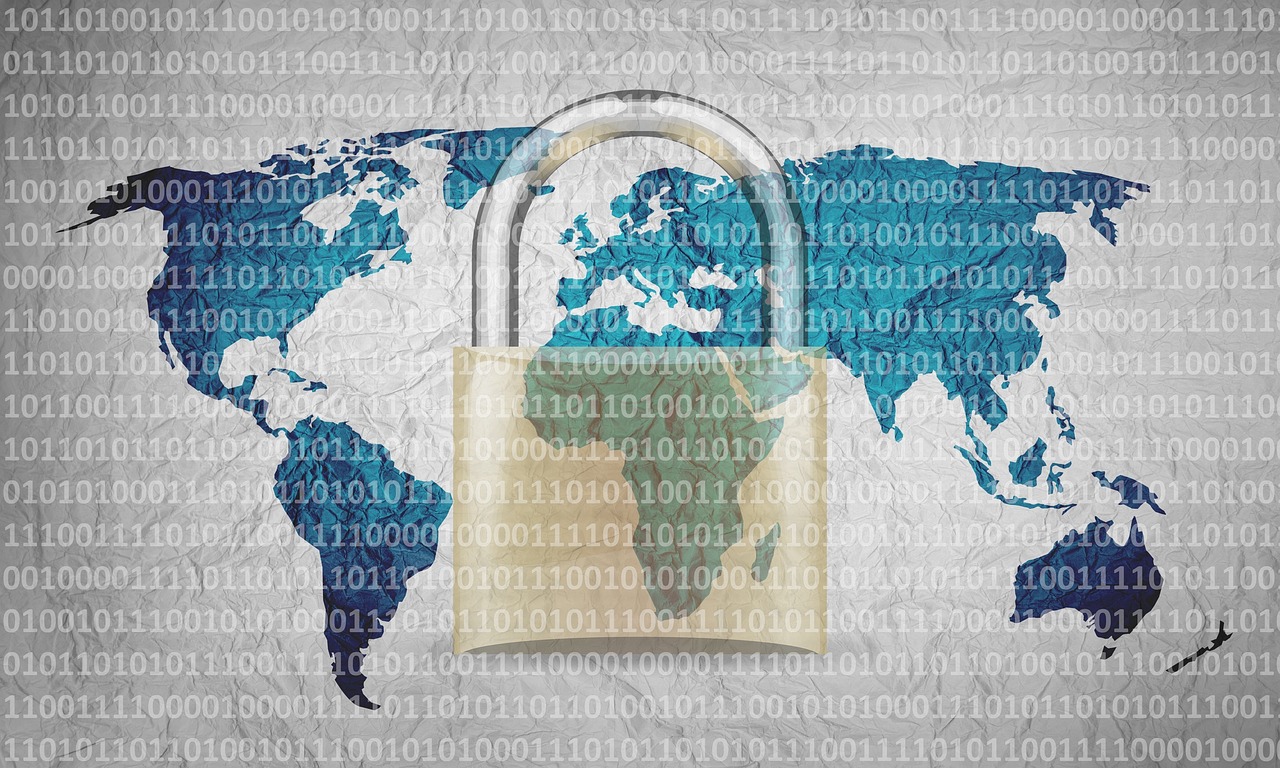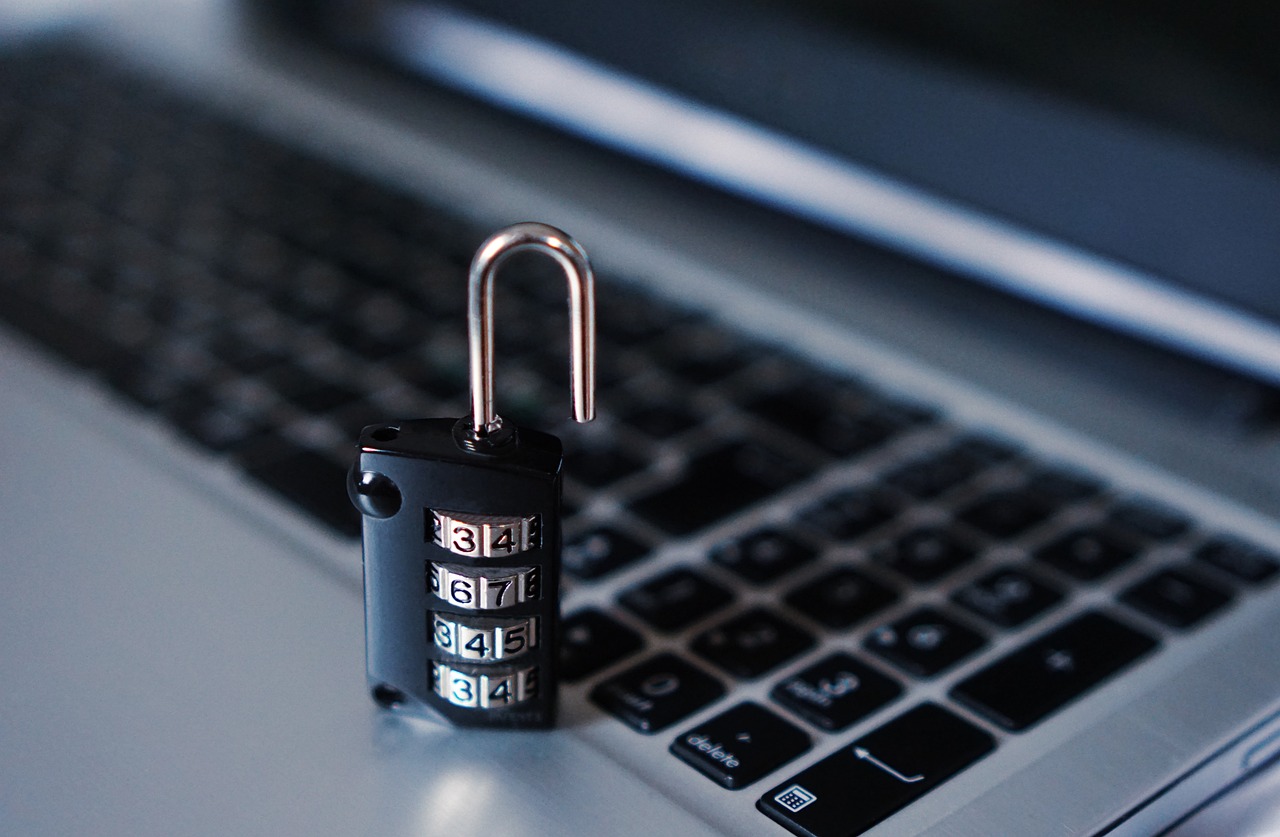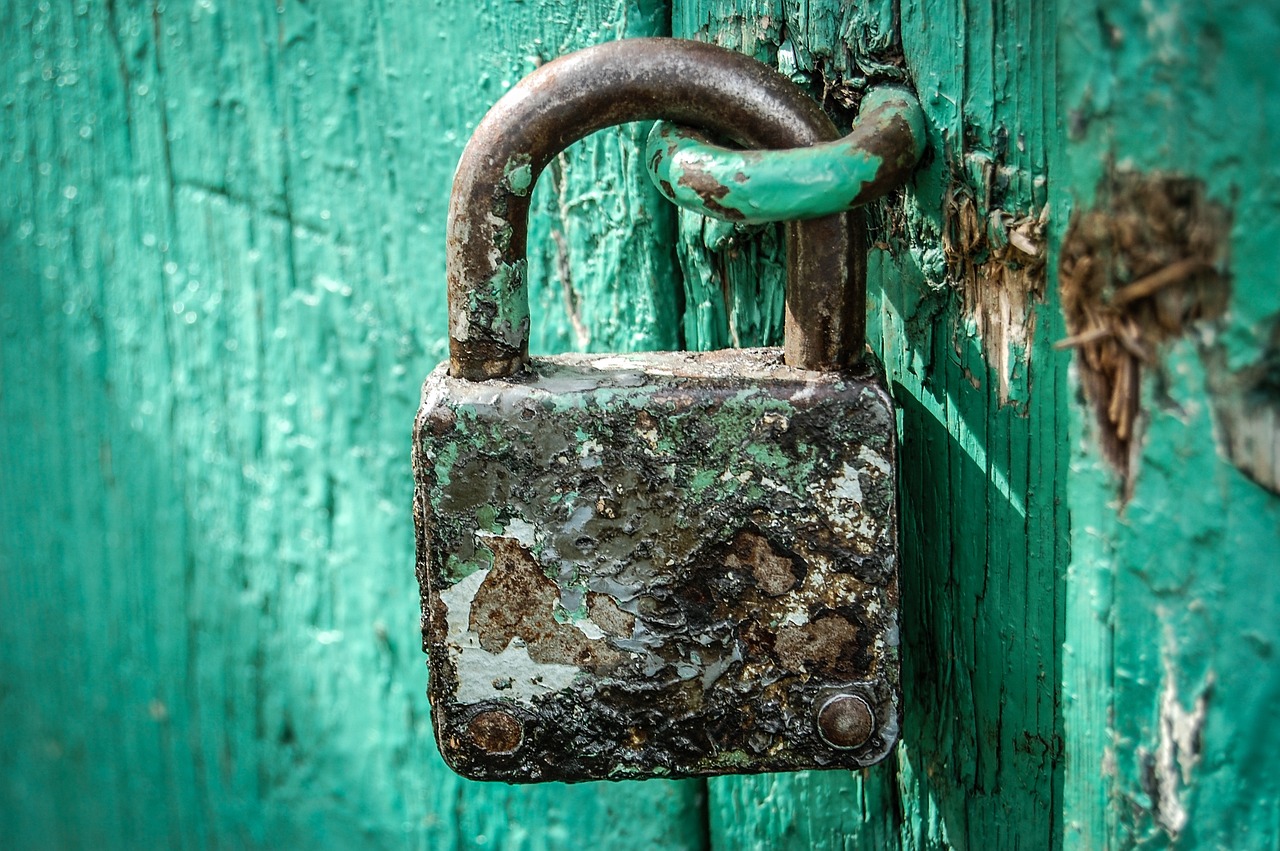Securing Your Home Against Cyber-Attacks
In today’s digital age, where everything is interconnected, securing your home against cyber-attacks is not just a luxury; it’s a necessity. Imagine your home as a fortress, but instead of brick and mortar, it’s built on a foundation of data and devices. Just as you wouldn’t leave the front door wide open, you must ensure that your digital doors are locked tight. Cyber threats lurk around every corner, waiting for a moment of vulnerability to exploit. From your smart fridge to your personal computer, every device you own can be a potential target. So, how do you safeguard your digital domain? This article explores essential strategies for protecting your home network from cyber threats, offering practical tips and insights to enhance your digital security and safeguard your personal information.
To effectively defend against cyber-attacks, it's crucial to understand the landscape of threats that could invade your home. Cyber threats come in various forms, and each has its own method of attack. For instance, malware can infiltrate your devices unnoticed, corrupting files and stealing sensitive information. Meanwhile, phishing scams trick you into revealing personal details by masquerading as legitimate entities. Then there’s the notorious ransomware, which locks you out of your own data until a ransom is paid. Each of these threats can have devastating consequences, from financial loss to identity theft. By recognizing these dangers, you can better prepare yourself to combat them.
One of the simplest yet most effective ways to protect your home network is by creating strong, unique passwords for all your devices and accounts. Think of your password as the key to your digital kingdom; a weak key can easily be picked. A strong password typically includes a mix of uppercase and lowercase letters, numbers, and special characters. It’s also essential to avoid using easily guessed information like birthdays or names. To manage these complex passwords effectively, consider using a password manager. This tool securely stores your passwords and can even generate strong ones for you, making it easier to maintain robust security without the hassle of remembering every single password.
Implementing two-factor authentication (2FA) adds an additional layer of security that can significantly deter hackers. With 2FA, even if someone manages to obtain your password, they would still need a second form of verification to gain access to your account. This could be a code sent to your phone or an app that generates a temporary code. The beauty of 2FA lies in its simplicity and effectiveness; it’s like having a second lock on your door. The more barriers you put up, the harder it is for intruders to get in.
When it comes to two-factor authentication, there are several methods to consider. You can opt for SMS codes, which send a text message to your phone with a verification code. Alternatively, authentication apps like Google Authenticator or Authy generate codes that refresh every 30 seconds, providing a more secure option. Lastly, there are hardware tokens, physical devices that generate codes and are less vulnerable to phishing attacks. Choosing the right method depends on your personal security needs and convenience preferences.
Setting up two-factor authentication is usually straightforward. Most popular platforms, such as Google, Facebook, and banking apps, have built-in options for enabling 2FA. Here’s a quick guide to get you started:
- Log into your account and navigate to the security settings.
- Look for the option labeled “two-factor authentication” or “2-step verification.”
- Follow the prompts to link your phone number or authentication app.
- Complete the setup by entering the verification code you receive.
Regularly updating your software is another vital strategy in protecting your home from cyber threats. Software developers frequently release updates to patch vulnerabilities that cybercriminals exploit. If you’re like many people who hit “remind me later” on update notifications, it’s time to change that habit. Think of software updates as the armor that protects your devices. Without it, you’re leaving your digital doors ajar for intruders to waltz right in. Make it a routine to check for updates on your operating systems and applications, ensuring that you’re always shielded from the latest threats.
Your home Wi-Fi network is the gateway to your digital life, and securing it is paramount. Start by changing the default settings on your router, including the default username and password, which are often easily accessible to hackers. Use strong encryption methods, like WPA3, to safeguard your connection. Another useful tip is to create a guest network for visitors. This keeps your primary network secure from potential threats introduced by guests who may inadvertently bring malware with them.
To keep a vigilant eye on your network, consider utilizing network monitoring tools. These tools help you track all devices connected to your network and can alert you to any unusual activity. Some popular options include Fing, GlassWire, and Wireshark. With these tools, you can ensure that no unauthorized devices are accessing your network, providing peace of mind in an increasingly connected world.
Setting up a guest network is a smart move for anyone who frequently has visitors. By doing this, you isolate your main network from any potential threats that guests might unintentionally introduce. Not only does it protect your personal devices, but it also allows your guests to access the internet without compromising your home security. Most modern routers make it easy to set up a guest network, so take advantage of this feature to keep your digital home safe.
- What is the most common type of cyber threat? Malware is one of the most prevalent threats targeting home networks.
- How often should I change my passwords? It’s recommended to change your passwords every 3-6 months, especially for sensitive accounts.
- Is two-factor authentication necessary? Yes, it adds a crucial layer of security that significantly reduces the risk of unauthorized access.
- What should I do if I suspect a cyber-attack? Immediately disconnect from the internet, change your passwords, and run a full security scan on your devices.

Understanding Cyber Threats
This article explores essential strategies for protecting your home network from cyber threats, offering practical tips and insights to enhance your digital security and safeguard your personal information.
In today's digital age, understanding the landscape of cyber threats is crucial for every homeowner. With the increasing reliance on technology, our homes are more connected than ever, making them prime targets for cybercriminals. But what exactly are these threats, and how do they impact our personal security? Let's break it down.
Cyber threats can come in various forms, each with its own methodology and potential consequences. Here are some of the most common types:
- Malware: Short for malicious software, malware includes viruses, worms, trojans, and spyware. Once it infiltrates your system, it can steal sensitive information, corrupt files, or even take control of your device.
- Phishing: This is a deceptive tactic where attackers impersonate trustworthy entities to trick you into revealing personal information, such as passwords or credit card numbers. Phishing often occurs through emails or fake websites.
- Ransomware: Imagine waking up to find your files locked and a demand for payment to regain access. That's ransomware in action. It encrypts your data and holds it hostage, often targeting both individuals and businesses.
The potential impact of these threats can be devastating. A successful cyber-attack can lead to identity theft, financial loss, and a significant breach of privacy. It's like leaving your front door wide open; once the intruder gets in, the damage can be extensive and hard to recover from. Just as you would install locks and security systems to protect your physical home, understanding these cyber threats is the first step in safeguarding your digital domain.
Moreover, the consequences of these attacks often extend beyond personal loss. They can affect your family, friends, and even your community. For instance, if your device is compromised, it may be used to launch attacks on others or spread malware further, creating a ripple effect of damage.
As we delve deeper into this topic, remember that knowledge is your first line of defense. By understanding the types of cyber threats that exist, you can take proactive measures to protect yourself and your loved ones. So, are you ready to fortify your digital defenses?
Learn why creating strong, unique passwords for all your devices and accounts is vital in preventing unauthorized access and how to manage them effectively using password managers.
Discover the benefits of implementing two-factor authentication (2FA) as an additional security layer, making it significantly harder for hackers to gain access to your accounts.
Explore different methods of two-factor authentication, such as SMS codes, authentication apps, and hardware tokens, and determine which option best suits your security needs.
Step-by-step guidance on how to enable two-factor authentication on popular platforms and devices to enhance your overall security posture.
Understand the importance of regularly updating your software, including operating systems and applications, to protect against vulnerabilities that cybercriminals exploit.
Learn how to secure your home Wi-Fi network, including changing default settings, using strong encryption, and creating a guest network to protect your primary network.
Explore various network monitoring tools that can help you keep track of devices connected to your network and detect any unusual activity.
Discover the benefits of setting up a guest network for visitors, ensuring your primary network remains secure from potential threats introduced by guests.
In this section, we address some common queries regarding home cybersecurity:
- What should I do if I suspect a cyber-attack? If you notice strange behavior on your devices, disconnect from the internet immediately and run a security scan.
- How often should I change my passwords? It's advisable to change your passwords every three to six months, or immediately if you suspect a breach.
- Is it safe to use public Wi-Fi? Public Wi-Fi can be risky; consider using a VPN to encrypt your connection when accessing sensitive information.

Importance of Strong Passwords
In today's digital landscape, the importance of strong passwords cannot be overstated. Think of your password as the key to your digital front door. If that key is weak or easily duplicated, you might as well be leaving your door wide open for anyone to stroll in. Cybercriminals are constantly on the prowl, looking for vulnerabilities to exploit, and a weak password is often the easiest way in. In fact, studies show that over 80% of data breaches involve compromised passwords. So, what makes a password strong? It’s not just about length; it’s about complexity and uniqueness.
Creating a strong password involves a combination of uppercase and lowercase letters, numbers, and special characters. For example, instead of using a simple password like "password123," you might opt for something like "P@ssw0rd!2023." This type of password is much harder for hackers to guess or crack using brute force techniques. Additionally, it’s crucial to avoid using easily obtainable information such as birthdays, names of pets, or common words. These can be easily guessed or found on social media profiles.
But let’s be honest, remembering all these complex passwords can feel like a daunting task. That’s where password managers come into play. These handy tools can generate and store strong passwords for you, allowing you to use unique passwords for every account without the mental gymnastics of trying to remember them all. With a password manager, you can simply remember one master password, which is much easier than juggling dozens of unique passwords.
Here’s a quick tip: consider using a passphrase instead of a traditional password. A passphrase is a sequence of words or a sentence that is easy for you to remember but hard for others to guess. For instance, “MyDogLovesToRun@ThePark!” is both memorable and complex. This method not only enhances security but also makes it easier for you to recall your password.
Ultimately, the goal is to make it as difficult as possible for unauthorized users to gain access to your accounts. A strong password is your first line of defense. So, take a few minutes to evaluate your current passwords and strengthen them where necessary. Remember, in the realm of cybersecurity, it’s always better to be safe than sorry!
- What makes a password strong? A strong password is at least 12 characters long and includes a mix of uppercase letters, lowercase letters, numbers, and special characters.
- How often should I change my passwords? It’s a good practice to change your passwords every 3 to 6 months, or immediately if you suspect any unauthorized access.
- Are password managers safe? Yes, reputable password managers use strong encryption to protect your stored passwords, making them a safer alternative to using the same password across multiple sites.
- Can I use the same password for multiple accounts? No, using the same password increases the risk of all your accounts being compromised if one gets hacked.

Two-Factor Authentication
In today’s digital world, securing your online accounts is more crucial than ever, and two-factor authentication (2FA) is one of the most effective ways to bolster your security. Imagine having a double lock on your door; even if someone has your key, they still can’t get in without that second layer of protection. That’s precisely what 2FA does for your online accounts. By requiring not just a password but also a second form of verification, it significantly reduces the risk of unauthorized access.
So, what exactly does 2FA entail? Typically, it combines something you know (like your password) with something you have (like your smartphone). This dual requirement makes it much harder for cybercriminals to breach your accounts. For instance, if a hacker manages to steal your password, they still won’t be able to log in without the second factor, which is often a time-sensitive code sent to your phone or generated by an authentication app.
Implementing 2FA is a straightforward process, and many platforms now offer it as a standard security feature. To give you a clearer picture, here’s a quick breakdown of the most common 2FA methods:
- SMS Codes: A one-time code sent to your registered mobile number.
- Authentication Apps: Apps like Google Authenticator or Authy generate time-sensitive codes.
- Hardware Tokens: Physical devices that generate codes or require you to press a button to authenticate.
Each method has its pros and cons. For example, while SMS codes are convenient, they can be intercepted. On the other hand, authentication apps are generally more secure, as they don’t rely on your phone number. Choosing the right method depends on your personal security needs and comfort level.
Setting up 2FA is usually a matter of navigating to your account's security settings and following the prompts. Most services provide detailed instructions, making it a user-friendly process. Once you’ve enabled it, you’ll receive a prompt for the second factor every time you log in from an unrecognized device, adding an essential layer of security.
In conclusion, adopting two-factor authentication is a simple yet powerful way to protect your online presence. It’s like having a security guard at your digital door—no one gets in without proper verification. By taking this step, you're not just safeguarding your accounts; you're also ensuring peace of mind in an increasingly dangerous cyber landscape.

Choosing the Right 2FA Method
When it comes to bolstering your online security, selecting the right method for two-factor authentication (2FA) is crucial. Think of 2FA as a double lock on your front door; it adds an extra layer of protection that makes it significantly harder for intruders to gain access. But just like choosing the right lock, you need to consider various options available to you. So, what are your choices?
There are several popular methods of implementing 2FA, each with its own set of advantages and disadvantages. Here’s a breakdown of the most common options:
| 2FA Method | Pros | Cons |
|---|---|---|
| SMS Codes | Easy to use; widely supported | Vulnerable to SIM swapping attacks |
| Authentication Apps | More secure than SMS; works offline | Requires installation and setup |
| Hardware Tokens | Highly secure; not susceptible to phishing | Can be lost or damaged; more expensive |
Now, let’s dive a little deeper into these options. SMS codes are the most common form of 2FA. They’re convenient because you receive a text message with a code that you enter after your password. However, did you know that SMS can be intercepted? That’s where authentication apps come into play. Apps like Google Authenticator or Authy generate codes that are time-sensitive and only available on your device, making them much harder for hackers to exploit.
If you’re looking for the gold standard in security, consider using a hardware token. These small devices generate codes independently of your phone and are immune to phishing attacks. However, they do come with a price tag and the risk of losing them. So, weigh your options carefully based on how much security you need and how much convenience you’re willing to sacrifice.
Ultimately, the choice of 2FA method should align with your personal security needs and lifestyle. If you frequently travel or use public Wi-Fi, an authentication app or hardware token might be a better fit for you than SMS codes. Remember, the goal is to make it as difficult as possible for anyone else to access your accounts while still keeping it user-friendly for yourself.
In conclusion, choosing the right 2FA method is not a one-size-fits-all situation. Consider your daily habits, the sensitivity of the information you’re protecting, and how comfortable you are with technology. By taking the time to select the best option for you, you’ll be well on your way to significantly enhancing your online security.
- What is two-factor authentication? Two-factor authentication (2FA) is a security process that requires two different forms of identification to access an account, typically something you know (like a password) and something you have (like a code sent to your phone).
- Is 2FA really necessary? Yes! 2FA adds an essential layer of security, making it significantly harder for unauthorized users to access your accounts, even if they have your password.
- Can I use multiple 2FA methods? Yes, many platforms allow you to set up multiple 2FA methods. This can provide even greater security, as you can switch between methods depending on your situation.

Setting Up 2FA
Setting up two-factor authentication (2FA) is one of the most effective ways to bolster your online security. It adds an extra layer of protection by requiring not just a password but also a second form of verification. This can significantly reduce the risk of unauthorized access to your accounts. So, how do you get started? Let's break it down step-by-step!
First, you need to identify which accounts support 2FA. Most major platforms such as Google, Facebook, and your email provider offer this feature. Once you've pinpointed the accounts you want to secure, log in and navigate to the security settings. Typically, you'll find an option labeled "Two-Factor Authentication" or "2-Step Verification." Click on that, and you’ll be guided through the setup process.
Next, you'll usually be prompted to choose your preferred verification method. Here are some common options:
- SMS Codes: A text message with a code is sent to your mobile device.
- Authentication Apps: Apps like Google Authenticator or Authy generate time-based codes.
- Hardware Tokens: Physical devices that generate codes or connect directly to your computer.
Once you select your method, follow the on-screen instructions. For SMS codes, you’ll enter your phone number and may receive a verification code to confirm your number. If you choose an authentication app, you’ll scan a QR code with the app to link it to your account. This process may vary slightly between platforms, but generally, they guide you through it seamlessly.
After successfully setting up 2FA, it’s crucial to back up your recovery codes. These codes are lifesavers if you lose access to your primary verification method, such as if you misplace your phone. Store these codes in a secure location, like a password manager or a locked drawer.
Finally, test your 2FA setup. Log out of your account and attempt to log back in. You should be prompted for your password and then asked for the second form of verification. If everything works smoothly, congratulations! You've added a vital layer of security to your accounts.
Remember, while 2FA is a powerful tool, it's not foolproof. Always stay vigilant and combine 2FA with other security measures like strong passwords and regular software updates to keep your digital life safe.
Q1: What if I lose my phone and can’t access my 2FA method?
A1: That’s why it’s essential to keep your backup recovery codes in a safe place. You can also set up multiple 2FA methods to ensure you have alternatives.
Q2: Does 2FA work on all websites?
A2: Not all websites offer 2FA, but many of the major platforms do. Always check the security settings of your accounts.
Q3: Is using SMS for 2FA secure?
A3: While SMS is better than having no 2FA, it’s considered less secure than using authentication apps or hardware tokens due to the risk of SIM swapping attacks.
Q4: Can I use 2FA on my email account?
A4: Yes! In fact, securing your email with 2FA is highly recommended since it often serves as a gateway to other accounts.

Keeping Software Updated
This article explores essential strategies for protecting your home network from cyber threats, offering practical tips and insights to enhance your digital security and safeguard your personal information.
Gain insight into the various types of cyber threats that can target your home, including malware, phishing, and ransomware, and understand their potential impact on your personal security.
Learn why creating strong, unique passwords for all your devices and accounts is vital in preventing unauthorized access and how to manage them effectively using password managers.
Discover the benefits of implementing two-factor authentication (2FA) as an additional security layer, making it significantly harder for hackers to gain access to your accounts.
Explore different methods of two-factor authentication, such as SMS codes, authentication apps, and hardware tokens, and determine which option best suits your security needs.
Step-by-step guidance on how to enable two-factor authentication on popular platforms and devices to enhance your overall security posture.
In the ever-evolving landscape of cyber threats, keeping your software updated is like fortifying the walls of your digital castle. Think of software updates as the protective armor that shields your devices from vulnerabilities that cybercriminals are constantly looking to exploit. Every time a developer releases an update, it often contains patches that fix security loopholes and bugs that could serve as gateways for hackers. Ignoring these updates is akin to leaving your front door wide open; it invites trouble right into your home.
Regular updates are essential not just for your operating system but also for applications, browsers, and even your smart home devices. Each piece of software you use can potentially be a target. Therefore, here are some key points to consider:
- Automatic Updates: Enable automatic updates whenever possible. This ensures that you receive the latest security patches without having to remember to check manually.
- Check for Updates: For applications that do not support automatic updates, make it a habit to check for updates regularly. Most software includes an option in the settings menu to search for updates.
- Understand the Risks: Cybercriminals are always on the lookout for outdated software. By keeping your software up to date, you significantly reduce the risk of falling victim to malware and other cyber threats.
Additionally, consider the impact of outdated software on your overall system performance. Software updates often come with performance enhancements that not only improve security but also make your devices run smoother and faster. So, think of updates as a dual-purpose tool: they protect your digital life while optimizing your user experience.
In conclusion, keeping your software updated is not just a good practice; it’s a necessity in today’s digital age. By prioritizing updates, you’re taking a proactive step towards safeguarding your personal information and enhancing your digital security.
Learn how to secure your home Wi-Fi network, including changing default settings, using strong encryption, and creating a guest network to protect your primary network.
Explore various network monitoring tools that can help you keep track of devices connected to your network and detect any unusual activity.
Discover the benefits of setting up a guest network for visitors, ensuring your primary network remains secure from potential threats introduced by guests.
Q: Why is it important to keep my software updated?
A: Keeping your software updated is crucial for protecting your devices from vulnerabilities that hackers can exploit. Updates often include security patches that address known issues.
Q: How can I enable automatic updates on my devices?
A: Most operating systems and applications have an option in their settings to enable automatic updates. Check the preferences or settings menu to activate this feature.
Q: What should I do if I miss an update?
A: If you miss an update, check the software's website or settings menu for the latest version and install it as soon as possible to ensure your device is secure.

Securing Your Wi-Fi Network
In today's digital age, securing your Wi-Fi network is not just a good idea; it's a necessity. Think of your Wi-Fi as the front door to your home. If it’s left wide open, anyone can waltz in and take what they want. Cybercriminals are constantly on the lookout for vulnerable networks, and an unsecured Wi-Fi connection can lead to unauthorized access to your personal data, identity theft, and even financial loss. So, how can you fortify your digital fortress? Let’s dive into some practical strategies that will help you secure your Wi-Fi network effectively.
First and foremost, one of the easiest ways to enhance your Wi-Fi security is by changing the default settings on your router. Most routers come with a default username and password that are widely known and can be easily exploited. By changing these credentials, you create a unique barrier that makes it harder for intruders to gain access. Aim for a strong password that combines letters, numbers, and symbols. A good rule of thumb is to make it at least 12 characters long and avoid using easily guessable information like birthdays or names.
Another critical step is to use strong encryption protocols. Most modern routers support WPA3 (Wi-Fi Protected Access 3), which is currently the most secure encryption method available. If your router doesn’t support WPA3, opt for WPA2. Avoid using WEP (Wired Equivalent Privacy) as it is outdated and relatively easy for hackers to crack. To change your encryption settings, log into your router's admin panel and navigate to the wireless security settings. This simple action can significantly reduce the risk of unauthorized access.
Creating a guest network is another effective way to keep your primary network secure. When visitors come over, they often need internet access, but giving them access to your main network can expose your devices to potential threats. By setting up a separate guest network, you can keep your personal devices isolated from any risks that might arise from visitors’ devices. Most modern routers allow you to set up a guest network easily, and you can even limit its bandwidth to ensure your primary network remains fast and secure.
Additionally, monitoring your network for unusual activity can help you detect potential threats early. There are various network monitoring tools available that can alert you to any unauthorized devices connected to your network. For instance, software like Fing or GlassWire can provide insights into what devices are connected and their data usage. If you notice any unfamiliar devices, it’s crucial to act quickly—disconnect them and change your Wi-Fi password immediately.
Lastly, don’t forget to regularly update your router’s firmware. Just like any other piece of technology, routers can have vulnerabilities that need to be patched. Manufacturers release firmware updates to fix these vulnerabilities and improve functionality. Check your router’s admin panel periodically for updates, or enable automatic updates if your router supports it. Keeping your router's software up to date is a simple yet effective way to bolster your network's security.
- What is the best way to secure my Wi-Fi network? Changing the default login credentials, using strong encryption like WPA3, and setting up a guest network are essential steps.
- How often should I change my Wi-Fi password? It’s a good practice to change your Wi-Fi password every 6 months or immediately if you suspect unauthorized access.
- Can I hide my Wi-Fi network? Yes, you can hide your SSID (network name) in your router settings, making it less visible to potential intruders.
- What should I do if I find an unknown device on my network? Disconnect the device and change your Wi-Fi password immediately to prevent further access.

Network Monitoring Tools
In today's digital landscape, where our homes are increasingly connected, have become essential for maintaining the security of our personal information. Imagine your home network as a bustling city; the devices connected to it are like vehicles on the road. Just as you wouldn't want any unauthorized cars cruising through your streets, you certainly don't want any unknown devices accessing your network. Network monitoring tools act as vigilant traffic cameras, keeping an eye on every vehicle and ensuring that only the right ones are allowed to pass through.
These tools provide you with the ability to monitor the traffic on your network in real-time, giving you insights into which devices are connected and what kind of data is being transmitted. Some popular network monitoring tools include:
- Wireshark: A powerful packet analyzer that lets you capture and analyze network traffic in detail.
- Nmap: A network scanning tool that helps discover devices on your network and identify open ports.
- Fing: A user-friendly app that quickly scans your network and provides details about connected devices.
Using these tools, you can easily identify any suspicious activity. For instance, if you notice an unfamiliar device connected to your network, it could be a sign of unauthorized access. With the right monitoring tool, you can take immediate action—like changing your Wi-Fi password or blocking that device. Think of it as having a security guard at the entrance of your digital home, ready to challenge anyone who doesn’t belong.
Moreover, many of these tools come with features that allow you to set alerts. You can receive notifications whenever a new device connects to your network or if there are unusual spikes in data usage. This proactive approach to monitoring not only helps in identifying potential threats but also aids in understanding how your network is being used. Is your smart fridge hogging bandwidth, or is someone streaming movies without your permission? With the right insights, you can optimize your network for better performance.
In addition to monitoring network traffic, some tools also provide security audits. These audits can reveal vulnerabilities in your network setup, helping you to fortify your defenses. For instance, they might identify outdated firmware on your router or weak encryption protocols that need upgrading. By regularly conducting these audits, you can stay one step ahead of cybercriminals, just like a chess player anticipating their opponent's moves.
In conclusion, investing in network monitoring tools is not just about keeping an eye on your devices; it’s about taking control of your digital environment. By understanding what’s happening on your network, you can make informed decisions that enhance your overall security. So, whether you’re a tech-savvy individual or just starting to explore the world of home cybersecurity, these tools are invaluable assets in your quest for a safer online experience.
Q: What are network monitoring tools?
A: Network monitoring tools are software applications that help you track and analyze the traffic on your network, providing insights into connected devices and potential security threats.
Q: Why do I need to monitor my home network?
A: Monitoring your home network helps you identify unauthorized access, optimize performance, and ensure that your personal information remains secure from cyber threats.
Q: Can I use network monitoring tools without being tech-savvy?
A: Yes! Many network monitoring tools are designed to be user-friendly, with intuitive interfaces that guide you through the monitoring process, making them accessible for everyone.

Guest Network Setup
Setting up a guest network is one of the smartest moves you can make to enhance your home’s cybersecurity. Imagine inviting friends over for a party and letting them connect to your Wi-Fi without exposing your personal devices to potential threats. A guest network acts like a protective barrier, keeping your main network secure while still providing internet access to visitors. It’s like having a separate entrance to your home for guests; they can come in and enjoy the space, but they can’t rummage through your personal belongings.
To set up a guest network, you’ll typically start by accessing your router’s settings. This process can vary depending on the router model, but here’s a general outline:
- Log into your router’s admin panel through your web browser. You can usually do this by entering the router’s IP address.
- Look for the section labeled Wireless Settings or Guest Network.
- Enable the guest network option. You’ll often have the ability to customize the network name (SSID) and password.
- Select the level of access you want to provide. Most routers allow you to restrict guest users from accessing your main network and local devices.
- Save your settings and restart the router if necessary.
Once your guest network is up and running, it’s essential to communicate the Wi-Fi credentials to your guests. You can provide them with a simple note or a digital message. This way, they can connect without hassle, and you can keep your main network safe from any potential threats they might inadvertently bring along.
Additionally, consider the following tips to further secure your guest network:
- Change the default password: Always use a strong, unique password for your guest network to prevent unauthorized access.
- Limit bandwidth= Some routers allow you to set bandwidth limits for guest users, ensuring that they don’t hog all your internet speed.
- Regularly update your router firmware: Keeping your router updated can help protect against vulnerabilities and improve overall security.
In conclusion, setting up a guest network is a simple yet effective way to enhance your digital security. It allows you to enjoy the convenience of sharing your internet connection while keeping your personal devices safe from potential cyber threats. So, the next time you have friends over, you can relax, knowing that your home network is well-protected!
Q1: What is a guest network?
A guest network is a separate Wi-Fi network that allows visitors to connect to the internet without accessing your main network and its connected devices.
Q2: How do I set up a guest network?
Access your router’s settings, enable the guest network option, customize the network name and password, and save your settings.
Q3: Can guests access my devices on the main network?
No, if set up correctly, guests will only have access to the internet and not to your personal devices on the main network.
Q4: Should I change the guest network password regularly?
Yes, changing the password periodically is a good practice to maintain security.
Frequently Asked Questions
- What are the most common types of cyber threats targeting home networks?
Cyber threats can come in various forms, including malware, which is malicious software designed to harm or exploit devices; phishing, where attackers trick you into providing personal information; and ransomware, which locks your files and demands payment for access. Understanding these threats is crucial for protecting your personal information.
- How can I create a strong password?
A strong password should be at least 12 characters long and include a mix of uppercase letters, lowercase letters, numbers, and special characters. Avoid using easily guessable information like birthdays or names. To manage them effectively, consider using a password manager that can generate and store complex passwords for you.
- What is two-factor authentication and why is it important?
Two-factor authentication (2FA) adds an extra layer of security by requiring not only your password but also a second piece of information, such as a code sent to your phone. This makes it significantly harder for hackers to gain access to your accounts, even if they have your password.
- What are the different methods of two-factor authentication?
There are several methods of 2FA, including SMS codes, which send a code to your phone; authentication apps, like Google Authenticator, that generate codes; and hardware tokens, which provide a physical device for authentication. Choose the method that best fits your needs for security and convenience.
- Why is it important to keep software updated?
Regularly updating your software, including operating systems and applications, is essential because updates often include security patches that protect against vulnerabilities. Cybercriminals actively exploit outdated software, so keeping everything up to date is a simple yet effective way to enhance your security.
- How can I secure my Wi-Fi network?
To secure your Wi-Fi network, start by changing the default username and password of your router. Use strong encryption methods like WPA3 if available, and consider creating a guest network for visitors, which keeps your primary network more secure.
- What are network monitoring tools?
Network monitoring tools help you keep track of devices connected to your network and can alert you to any unusual activity. These tools can be invaluable for detecting potential threats and ensuring that your home network remains secure.
- What are the benefits of setting up a guest network?
Creating a guest network allows visitors to access the internet without compromising your primary network's security. This means that any potential threats introduced by guests won't affect your personal devices, keeping your data safe and secure.



















